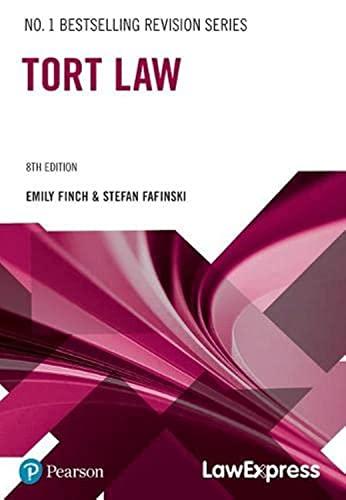Question
Dissent to United States v. Locke 1. Which statutory construction approach did Justice Stevens adopt in dissenting on the grounds that Congress did not intend
Dissent to United States v. Locke
1. Which statutory construction approach did Justice Stevens adopt in dissenting on the grounds that Congress did not intend the claim to be lost?
2. Which approachthe majority's or the dissent'sdo you think is better? Why?
3. In his dissent, Justice Stevens explained the use of the language "prior to December 31" as "the consequence of a legislative accident, perhaps caused by nothing more than the unfortunate fact that Congress is too busy to do all of its work as carefully as it should." Is it appropriate for the Court to conclude that Congress was sloppy in its drafting? Or should the Court be deferential to the congressional language? Justice Stewart made a similar point in a later case of statutory interpretation where he quoted from a story in the New York Times: Smoking a big cigar, the Speaker [of the House of Representatives] got angry again over the slap-dash quality of the bill ... with parts of it photocopied from memorandums, other parts handwritten at the last minute, and some final sections hastily crossed out in whorls of pencil marks. * * * But then he smiled, too, noting such cryptic and accidental entries in the [budget] bill as the name and phone number'Ruth Seymour, 225-4844'standing alone as if it were a special appropriation item.17
4. Why do both the majority and the dissent discuss the BLM regulations? What role, if any, should agency regulations play in statutory construction? How can the administrative regulations shed light on the legislative intent when they were adopted after the statute by an administrative agency? Which argument using the regulations is more persuasive? Given that the Court interprets the statute to impose a strict December 30 deadline, how can it be that the BLM accepts mailed filings up to January 19?
5. What happens if the Court interprets a statute contrary to congressional intent? Is there a corrective mechanism?
Text book source:
Johns, Margaret Z.. The United States Legal System: An Introduction, Fourth Edition (pp. 141-142). Carolina Academic Press. Kindle Edition.
Johns, Margaret Z.. The United States Legal System: An Introduction, Fourth Edition (p. 141). Carolina Academic Press. Kindle Edition.
Johns, Margaret Z.. The United States Legal System: An Introduction, Fourth Edition (p. 138). Carolina Academic Press. Kindle Edition.
Step by Step Solution
There are 3 Steps involved in it
Step: 1

Get Instant Access to Expert-Tailored Solutions
See step-by-step solutions with expert insights and AI powered tools for academic success
Step: 2

Step: 3

Ace Your Homework with AI
Get the answers you need in no time with our AI-driven, step-by-step assistance
Get Started


